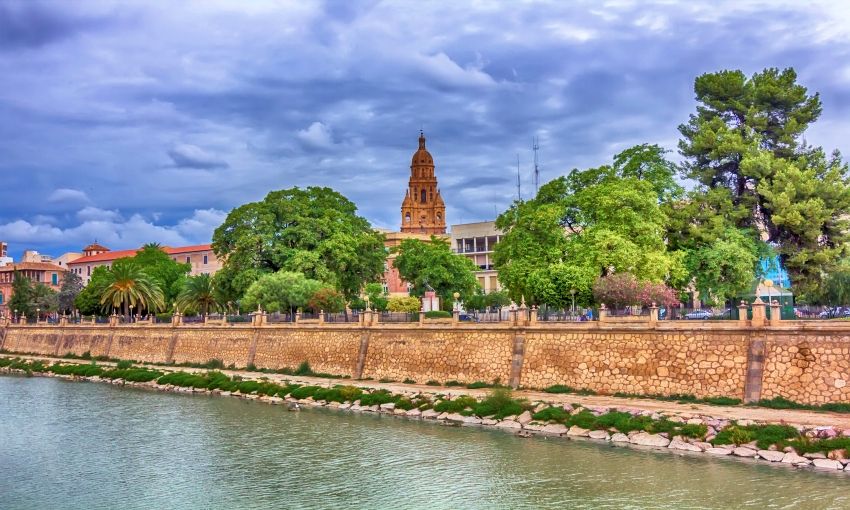
History of Murcia
Murcia is the seventh-largest municipality in Spain in terms of population. According to data from the year 2019, the municipality of Murcia has 453,258 inhabitants. It is the capital of the region of Murcia and also the Huerta de Murcia region. The natural environment of the municipality is marked by the Segura River and a landscape of orchards, as the municipality is located in a fertile valley bordered to the south by a mountain range, where the Sierra de Carrascoy stands out.
The origins of Murcia
The origins of Murcia are found in the first Iberian villages, such as the Santuario de La Luz. Later, during Roman times, isolated settlements were founded on the banks of the Segura River to exploit its agricultural wealth.However, the development of Murcia did not take place until the Middle Ages, when the Muslims founded the medina of Mursiya (825) with the aim of maintaining peace in the kingdom of Tudmir. At those times, Lurqa (Lorca) was the capital of that kingdom, but over the years Lurqa became less important, to the point that Mursiya became the capital of the kingdom of Tudmir.
Thanks to the Pact of Alcaraz in 1243, the Christians reconquered the city of Murcia and the rest of the adjacent towns, which became part of the Crown of Castile.

After the death of King Ferdinand III of Castile in 1252, his son, King Alfonso X the Wise, did not respect the conditions of the Treaty of Alcaraz, which caused the protest of the Muslim community and a subsequent uprising in 1264 (rebellion of the Mudejars).
The failure of this rebellion ended with the expulsion of the Mudejars from the area. They took refuge in Granada, the last Islamic stronghold in the Iberian Peninsula. This allowed Alfonso X to initiate a policy of granting land and manors to Christian nobles and repopulators.
The failure of this rebellion ended with the expulsion of the Mudejars from the area. They took refuge in Granada, the last Islamic stronghold in the Iberian Peninsula. This allowed Alfonso X to initiate a policy of granting land and manors to Christian nobles and repopulators.
The image of Murcia changed in the following years, with mosques disappearing and new churches being built throughout the city. In 1291 the city of Murcia became an episcopal see.
The 14th century was devastating for Murcia due to the plagues that destroyed the health of the inhabitants. In the following centuries, its population grew and its economy improved. In the 18th century, it began to experience a development that was seen through art and its urbanization. In fact, that moment in history is considered the golden century of Murcia, with its most prominent personalities being Jose Moñino y Redondo (I Count of Floridablanca) and Francisco Salzillo y Alcaraz.
Murcia today
On May 25, 1982, the Congress of Deputies approved the Statute of Autonomy of the Region of Murcia. It became the current Uniprovincial Autonomous Community.In the last 30 years, the population of the city of Murcia has almost tripled, as the city experienced spectacular urban growth.














